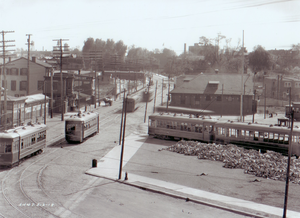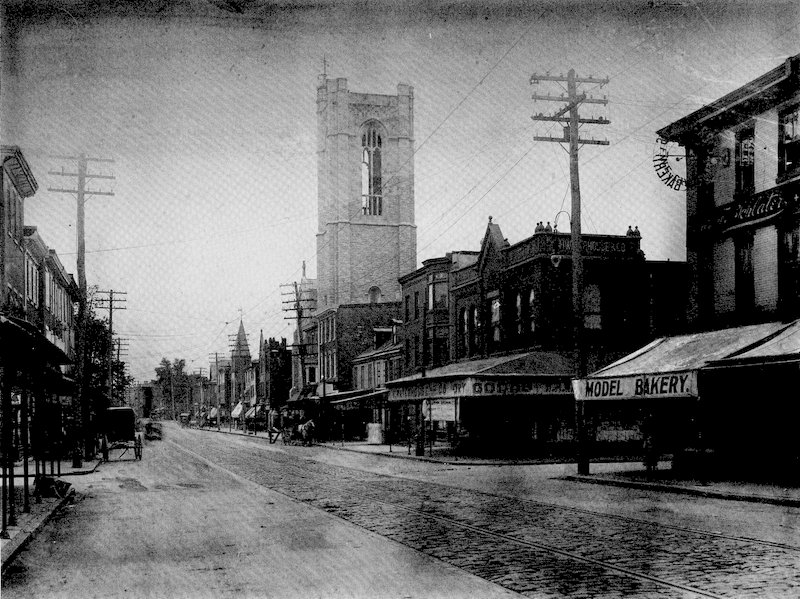Rediscovering Frankford: A Philadelphia Neighborhood With a Rich Heritage
Frankford, a vibrant neighborhood in the Northeast section of Philadelphia, is a hidden gem with an intriguing past and a promising future. Known for its diverse population and rich history, Frankford is a testament to the resilience and spirit of the City of Brotherly Love.
Frankford’s Geographical Context and Surrounding Neighborhoods
Located approximately six miles northeast of Center City, this area is nestled within the boundaries defined by Frankford Creek, Castor Avenue, Cheltenham Avenue, Aramingo Avenue, and I-95. The neighborhood is adjacent to several others, including Bridesburg, Juniata, Northwood, Summerdale, and Wissinoming, which contribute to the diversity and dynamism of the community.
Historically, an unofficial division existed between Frankford and East Frankford, the area east of Frankford Avenue. This division initially reflected racial disparities, with African Americans residing east of Frankford Avenue and Caucasians to the west. However, as the community has evolved and diversified, this division has been more symbolic than real.
A Brief History of Frankford
The origins of the neighborhood date back to 1682 when the village was established by Quakers in an area previously inhabited by Dutch settlers, Swedes, Finns, and Native Americans. The land, known as the Manor of Frank, was purchased by the Free Society of Traders, a group of Quaker businessmen from England. The village likely derived its name from the Frankfurt Company, which established a presence along Frankford Creek.
The neighborhood evolved as an early suburb of Philadelphia, largely due to the construction of a trail (later known as Frankford Pike and Frankford Avenue) through the village by William Penn, the founder of Pennsylvania. This trail connected the original town (now Center City) to New York City, passing through Bucks County near Penn’s home, Pennsbury Manor.
In 1800, the village was incorporated as a borough, and in 1854, it was annexed by the city of Philadelphia through the Act of Consolidation. The area has always been a hub of manufacturing, with its initial gristmill erected in the 1660s gaining historical significance during the American Revolutionary War due to the heroics of Lydia Darrah.
Frankford and the Declaration of Independence
The area has had its share in the country’s march towards independence. As per tradition, Thomas Jefferson and others celebrated the passing of the Declaration of Independence at the garden-house of a country-seat in Frankford, then occupied by Dr. Enoch Edwards, a noted patriot of that era.
Industrial Revolution and the Rise of Frankford

The 19th century saw the area emerging as a center for textile production. Several manufacturing industries thrived in the town, transforming it into a bustling hub of economic activity. The Frankford Arsenal, which played a crucial role during World War II, provided over 22,000 jobs and produced 8 million bullets per day at its peak.
In 1922, the Frankford Elevated Line was inaugurated, connecting to the Market Street Elevated to offer rapid-transit access to Center City and West Philadelphia. The Frankford Transportation Center, the terminus of today’s SEPTA Market-Frankford Line, has become a major transit hub, facilitating the commute for residents of the neighborhood and beyond.
Change, Challenges, and the Road Ahead
Despite the introduction of the Frankford Line, which catalyzed the transformation of Frankford Avenue into a major shopping district in the early 20th century, the neighborhood faced decline in the 1950s as many Philadelphians moved to the suburbs. This trend, often referred to as ‘white flight’, continued throughout the 1970s and 1980s, leading to over 30% of the storefronts on Frankford Avenue being vacant by 1990.
However, the spirit of revival has been strong in the area. In 1993, the Philadelphia City Planning Commission adopted the Frankford Plan as a blueprint for revitalizing the neighborhood. Today, while many vacant storefronts remain, new businesses have opened their doors, catering to a changing demographic.
Several attempts to improve the area have been made, with hopes that the gentrification of neighborhoods like Fishtown and Kensington will spread north into the neighborhood. Despite these efforts, challenges remain, with certain areas of the neighborhood still grappling with issues of street crime and open-air drug sales.
Notable Landmarks
The neigborhood is home to several museums, churches, and schools, each with its own unique story. The Grand Army of the Republic Museum and Library, the Historical Society of Frankford, and numerous churches of historical significance add to the cultural richness of the neighborhood.
The Frankford Friends School, Frankford High School, and several other educational institutions serve the community, shaping the minds of future generations. The Frankford Branch of the Free Library of Philadelphia also adds to the intellectual resources available to residents.
Crime in Frankford
Despite its rich history and cultural diversity, the neighborhood has faced challenges related to crime. The neighborhood was the hunting ground for the infamous “Frankford Slasher” between 1985 and 1990. Moreover, certain intersections in the area have been identified as hotspots for recreational drug use.
Frankford’s Demographics
This area is a melting pot of various ethnic groups, boasting a large number of Irish Americans, Polish Americans, Italian Americans, Portuguese Americans, Brazilian Americans, Arab Americans, African Americans, Hispanic Americans, and West Indian Americans. The population of Frankford grew by 3% between the 1990 and 2000 censuses, reflecting its enduring appeal as a place to live and work.
Notable Residents
The neighborhood has been home to several notable individuals, including jazz drummer and band leader Butch Ballard, Judge Edward R. Becker of the United States Court of Appeals for the Third Circuit, and former Philadelphia mayor and Representative William J. Green, III.
Education
The neighborhood is served by the School District of Philadelphia, with Frankford High School being the community’s public high school since 1910. The neighborhood also houses the Frankford Friends School, a private Pre-Kindergarten through 8th-grade school. The Frankford Hospital School of Nursing, which operated from 1904 to 2020, has also been a significant contributor to the educational landscape of the area.
Sports
The community was home to the Frankford Yellow Jackets, a National Football League team that won the championship in 1926 but folded in 1931. Today, sports continue to play an important role in the community with local organizations like the N.E. Frankford Boys and Girls Club American Legion Post 224 Drill Team, who won the AMA Nationals Championship in 2005 and 2006.
Frankford, with its rich history, diverse population, and enduring spirit of resilience, stands as a testament to the vibrancy of Philadelphia’s neighborhoods. Despite the challenges it has faced, the community continues to thrive, driven by a commitment to preserving its past while embracing the opportunities of the future. As the area moves forward, it continues to be a vital thread in the rich tapestry of Philadelphia’s cultural, historical, and social fabric.
